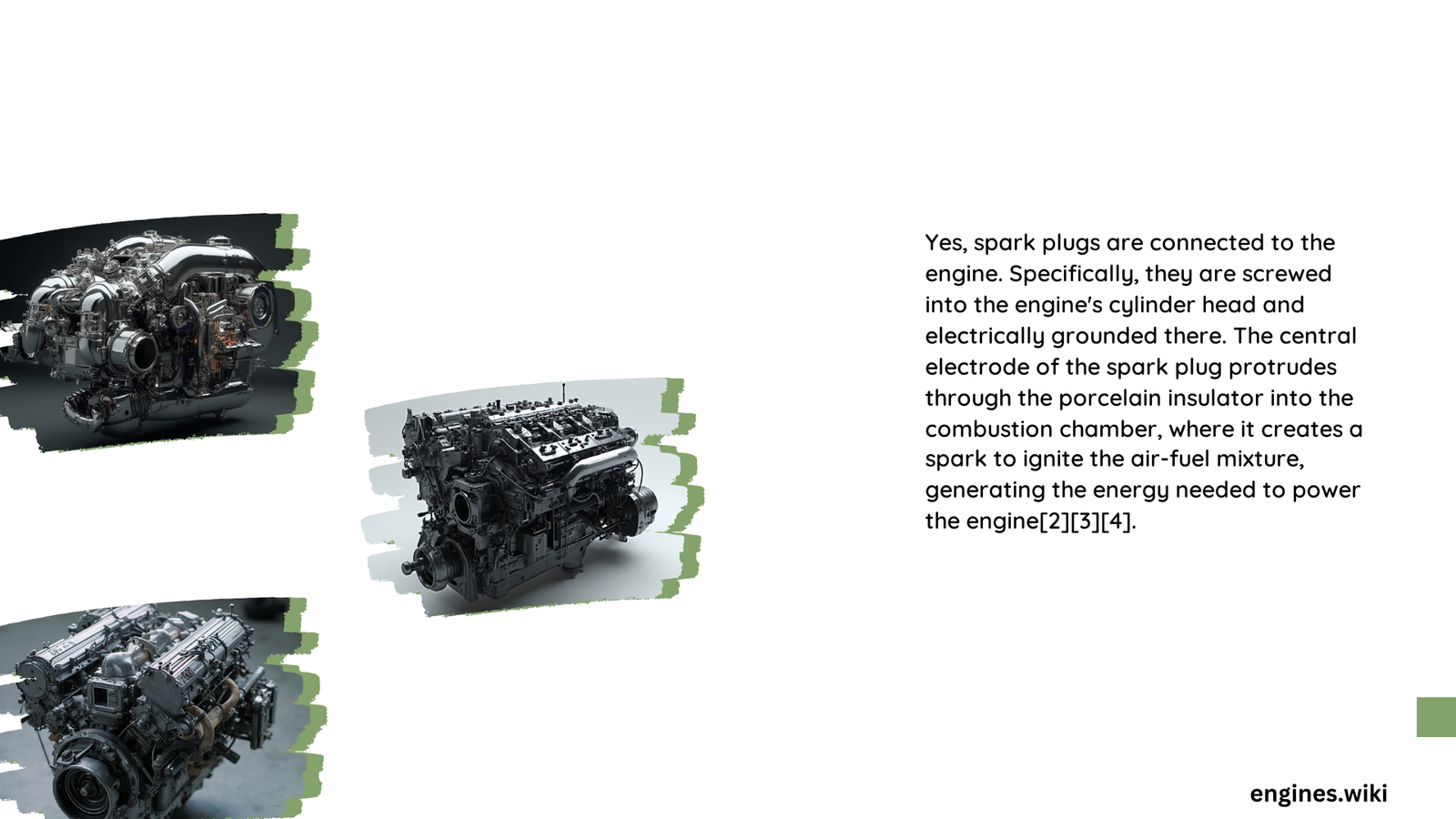Spark plugs are critical electrical components fundamentally connected to an engine’s operational mechanism, serving as the critical interface between electrical systems and mechanical combustion processes. These precision-engineered devices transmit high-voltage electrical energy directly into the engine’s combustion chamber, initiating the critical spark that transforms compressed fuel-air mixtures into mechanical power through controlled explosions.
What Makes Spark Plugs Essential to Engine Operation?
How Do Spark Plugs Connect Electrically to Engines?
Spark plugs connect to engines through multiple critical pathways:
- Electrical Connection
- Directly threaded into cylinder head
- Connected via ignition coil or distributor
-
Receive high-voltage electrical current
-
Mechanical Connection
- Screwed into engine’s combustion chamber
- Precisely positioned to create optimal spark
- Designed to withstand extreme temperatures
What Are Primary Electrical Transmission Mechanisms?
| Connection Type | Voltage Range | Transmission Method |
|---|---|---|
| Direct Ignition | 20,000-40,000 Volts | Individual Coil Per Cylinder |
| Distributor System | 12,000-25,000 Volts | Centralized Coil Distribution |
| Coil-on-Plug System | 30,000-50,000 Volts | Direct Cylinder Mounting |
Why Are Precise Electrical Connections Critical?
Spark plugs require microsecond-level precision in electrical transmission. Their connection involves:
- Exact Gap Measurement: Typically 0.028-0.060 inches
- Material Conductivity: Copper, platinum, or iridium electrodes
- Thermal Resistance: Capable of handling 900-1,450°F temperatures
How Do Spark Plugs Integrate with Engine Management Systems?
Modern engines utilize sophisticated computer-controlled systems that:
– Monitor spark timing
– Adjust voltage requirements
– Optimize combustion efficiency
– Detect potential misfires
What Happens During Electrical Transmission?
When electrical current passes through spark plugs:
1. High-voltage electricity jumps electrode gap
2. Creates controlled electrical arc
3. Ignites compressed fuel-air mixture
4. Generates explosive force driving piston
5. Converts electrical energy to mechanical motion
What Factors Influence Spark Plug Performance?
Critical performance factors include:
– Engine temperature
– Fuel quality
– Electrical system integrity
– Maintenance frequency
– Manufacturing precision
Can Incorrect Connections Damage Engines?
Improper spark plug connections can lead to:
– Reduced fuel efficiency
– Decreased engine performance
– Potential catastrophic engine damage
– Increased emissions
– Higher maintenance costs
Conclusion: Spark Plugs as Engine’s Electrical Heartbeat

Spark plugs represent more than simple electrical components; they are sophisticated interfaces translating electrical energy into mechanical power, serving as the critical link between an engine’s electrical and mechanical systems.
Technical Specifications Summary
- Voltage Range: 20,000-50,000 Volts
- Operating Temperature: 900-1,450°F
- Typical Lifespan: 30,000-100,000 miles
- Connection Type: Direct electrical and mechanical
Reference:
– SAE International Spark Plug Research
– Society of Automotive Engineers Publications
– DENSO Spark Plug Technical Documentation
